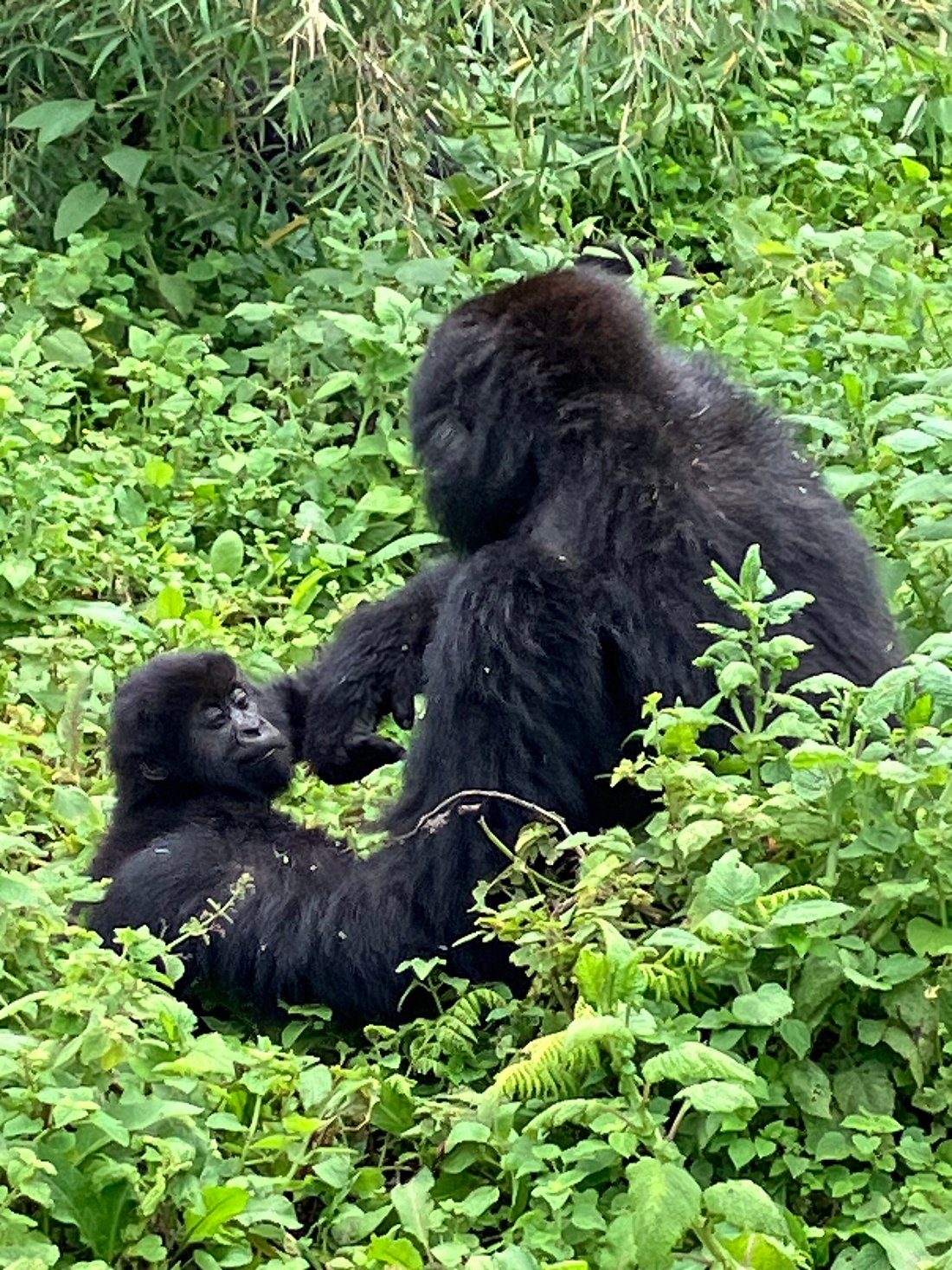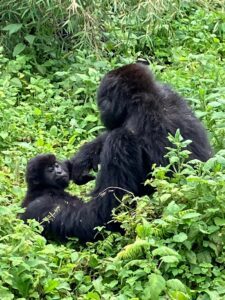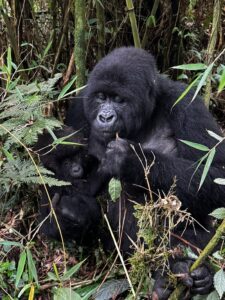Rwanda, often referred to as the “Land of a Thousand Hills,” is a country brimming with diverse wildlife, rich cultural heritage, and breathtaking landscapes. For adventurers seeking an immersive and unforgettable experience, Combine Cultural Experience and Gorilla Trekking in Rwanda it’ an exploration with the world-renowned gorilla trekking in Rwanda is the ultimate way to discover the heart and soul of this beautiful country.
In this guide, we’ll take you through the best ways to blend these two experiences—immersing yourself in the local Rwandan culture while embarking on a thrilling gorilla trekking adventure. Whether you’re a wildlife enthusiast, culture buff, or looking to engage in a truly authentic African adventure, Rwanda offers something for everyone.
Why Combine Cultural Experience and Gorilla Trekking in Rwanda?
The Unique Appeal of Rwanda
Rwanda has a growing reputation as a premier wildlife destination, particularly for its gorilla trekking opportunities in Volcanoes National Park. However, what many don’t realize is that Rwanda offers a rich cultural tapestry that complements the adventure of gorilla trekking. From traditional dances to local communities’ lifestyle, combining cultural experience and gorilla trekking in Rwanda allows visitors to experience a well-rounded view of the country’s heritage and natural wonders.
Gorilla trekking in Rwanda has become a once-in-a-lifetime experience for those wanting to see the endangered mountain gorillas up close in their natural habitat. But alongside this wildlife experience, combining cultural experience and gorilla trekking in Rwanda lets you connect with the people, learn about their stories, history, and customs, and gain a deeper understanding of the country’s diverse identity.
Cultural Tourism and Wildlife – The Perfect Pair, Combine Cultural Experience and Gorilla Trekking in Rwanda
Rwanda’s commitment to preserving both its wildlife and cultural heritage has resulted in an integrated approach to tourism. Many tour operators are offering combined itineraries, which give tourists the chance to trek with gorillas in the morning and engage with local communities in the afternoon. This fusion ensures that travelers get to appreciate the depth of Rwanda’s heritage while also contributing to the conservation efforts that protect its wildlife.
Top places that Combine Cultural Experience and Gorilla Trekking in Rwanda
If you’re planning a trip to Rwanda and want to incorporate cultural experiences alongside your gorilla trekking adventure, here are some activities that will provide you with a deep connection to the country’s people, history, and traditions.
1. Visit the Iby’iwacu Cultural Village
Located just outside Volcanoes National Park, the Iby’iwacu Cultural Village offers an incredible opportunity to engage with the local Batwa (Pygmy) people, one of the indigenous communities of Rwanda. The Batwa were once forest-dwelling hunter-gatherers who lived in harmony with the wildlife of the Volcanoes region.
Today, visitors to Iby’iwacu can participate in cultural demonstrations, learn traditional dances, and discover how the Batwa people’s way of life has evolved since they were displaced from the forest in the 1990s. A visit here provides an authentic cultural exchange that deepens your understanding of Rwanda’s complex history.
2. Explore Kigali’s Genocide Memorial and Museum
Kigali, Rwanda’s vibrant capital, is home to the Kigali Genocide Memorial, an essential stop for anyone wishing to understand the country’s tumultuous past. The memorial honors the victims of the 1994 Rwandan Genocide and offers powerful exhibits that tell the story of the country’s recovery and transformation.
While your primary focus might be on wildlife in the north of Rwanda, taking time to reflect on the historical significance of the genocide and Rwanda’s reconciliation efforts is an important part of understanding the culture. The Kigali Genocide Memorial serves as both a place of remembrance and a testament to Rwanda’s journey toward unity and peace.
3. Experience Traditional Rwandan Dance and Music
Rwanda’s music and dance culture are deeply woven into the fabric of its communities. The Intore Dance, also known as the Royal Dance, is one of the most iconic cultural performances in Rwanda. This energetic and vibrant dance showcases Rwanda’s royal traditions and has been passed down through generations.
You can enjoy a live Intore Dance performance in several cultural venues across the country, including the Iby’iwacu Village and local hotels. These performances are often accompanied by drumming, singing, and chanting, offering a sensory feast that celebrates Rwanda’s heritage.
4. Visit the Rwanda Craft Villages
For those interested in purchasing authentic Rwandan souvenirs, a trip to one of the craft villages is a must. These villages, often run by local artisans, offer a wide range of handmade goods including basketry, jewelry, clothing, and sculptures. The Nyanza Arts and Craft Center, located in southern Rwanda, is one of the most popular places to experience local craftsmanship.
By visiting these craft villages, you not only take home a unique piece of Rwanda but also support local artisans and contribute to sustainable tourism. Many of these villages also host workshops where you can learn the art of basket weaving, pottery making, or traditional embroidery.
5. Explore Lake Kivu and the Local Fishing Villages
Lake Kivu, one of Africa’s Great Lakes, is a beautiful destination for those looking to unwind after a gorilla trek. The lake’s shores are dotted with quaint fishing villages, where visitors can interact with the local fishing communities. Exploring Lake Kivu’s serene waters by boat, or enjoying a walk through the picturesque towns like Gisenyi and Rubavu, provides a glimpse into the daily life of rural Rwanda.
Locals often engage in traditional fishing methods, and visitors can learn about the sustainable practices that preserve the health of the lake’s ecosystem. This experience is perfect for those who want to connect with Rwanda’s natural beauty and enjoy some downtime after an intense trekking experience.
The Best Time to Combine Cultural Experience and Gorilla Trekking in Rwanda
Rwanda’s mild tropical climate means that it can be visited year-round, but the best time to combine cultural experiences with gorilla trekking is during the dry seasons, typically from June to September and from December to February. During these months, the trekking conditions are more favorable, and cultural events like dances and music performances are held more frequently.
While the rainy seasons (from March to May and October to November) can still offer a rewarding experience, trekkers should be prepared for muddier trails and more challenging hiking conditions. However, if you prefer fewer crowds and more serene cultural encounters, the rainy season could be a great time to explore.
How to Plan Your Combine Cultural Experience and Gorilla Trekking in Rwanda
Planning a trip to Rwanda that combines gorilla trekking and cultural tourism requires some thoughtful coordination. Here’s a guide to help you get started:
1. Choose the Right Tour Operator
To make the most out of your experience, it’s advisable to book through a reputable tour operator that specializes in both Rwanda safari tours and cultural tours. Many operators offer customizable packages that include both gorilla trekking permits and cultural activities such as village visits, museum tours, and dance performances.
2. Allocate Enough Time
Rwanda may be a small country, but it offers a wealth of experiences. To combine both cultural exploration and wildlife adventures, allocate at least 7-10 days for your trip. This will give you enough time to experience the best of both worlds without feeling rushed.
3. Prepare for Your Gorilla Trekking Adventure
Gorilla trekking requires a certain level of fitness, as you’ll be hiking through dense vegetation at high altitudes. Make sure to pack appropriately for the trek, including sturdy hiking boots, long-sleeved shirts, rain gear, and gloves. Additionally, bring along binoculars for spotting wildlife and a camera to capture the experience (though be mindful of photography rules around gorillas).
Conclusion: Why You Should Combine Cultural Experience and Gorilla Trekking in Rwanda
Rwanda is a country where the past and present blend seamlessly, where the beauty of the natural world is intertwined with the rich culture of its people. By combining cultural experience and gorilla trekking in Rwanda, you gain a comprehensive understanding of Rwanda’s biodiversity, history, and way of life. This perfect fusion of wildlife and culture creates an unforgettable journey that truly captures the essence of the country.
From spending time with the mountain gorillas of Volcanoes National Park to engaging with local communities in Rwanda’s craft villages and cultural centers, combining cultural experience and gorilla trekking in Rwanda offers a profound connection to the country that goes beyond typical tourism. Whether you’re a nature lover or a cultural enthusiast, Rwanda promises a journey that is as enlightening as it is exhilarating.
So, pack your bags, lace up your hiking boots, and get ready to embark on the ultimate adventure of combining gorilla trekking with cultural experiences in Rwanda—the “Land of a Thousand Hills.”




